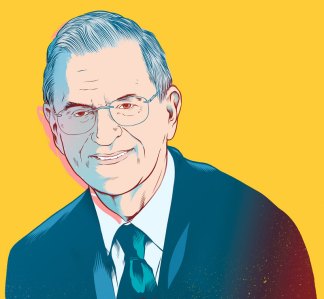Howard Rubenstein: Harry B. Helmsley Distinguished New Yorker Recipient
By Jotham Sederstrom January 17, 2012 2:30 pm
reprintsManhattan real estate moguls talk about his “Solomonic wisdom,” according to The New York Times.
Former Mayor Rudolph Giuliani called him the “dean of damage control.” His public relations firm, Rubenstein Associates, once simultaneously represented both Leona Helmsley and Donald Trump.
So it’s no exaggeration to say that nothing of importance happens in New York City without somehow involving Howard J. Rubenstein.

A REBNY member since “forever,” in his words, Mr. Rubenstein, the city’s ultimate spin doctor, has been honored with this year’s “Harry B. Helmsley Distinguished New Yorker” award for his contributions to the civic welfare and the real estate community.
“I’ve been involved with the real estate community for over 40 years,” said Mr. Rubenstein. “I’ve enjoyed it immensely. They’ve built the city that allowed me to do so much in my career. Harry Helmsley was one of my very first accounts.”
Mr. Rubenstein, 79, grew up in Bensonhurst, Brooklyn, the son of a police reporter for the New York Herald Tribune. He graduated Phi Beta Kappa from the University of Pennsylvania and then came back to Brooklyn. In 1954, with not much money in the bank and working at his parent’s kitchen table, Mr. Rubenstein started the public relations firm that’s spilled oceans of printer’s ink, negotiated hundreds of thousands of scandals and tenaciously stood by New York City even in the worst of times.
“It all started very modestly with $100 in the bank and an idea,” he said. Menorah Home and Hospital for the Aged and Infirm was his first client. “I wrote speeches and they wanted to see if they could get them in the papers,” he said. “I called my father and he called everyone he knew.”
His clients started getting into the newspapers and his reputation grew. The idea, said Mr. Rubenstein was not just to promote a single client, but to put that client—be it person or development—in the context of the city. “I had a vision to tie any one building to a vision of New York,” he said. “It wasn’t one building, it was a conglomeration of different factors, economic, social.”


